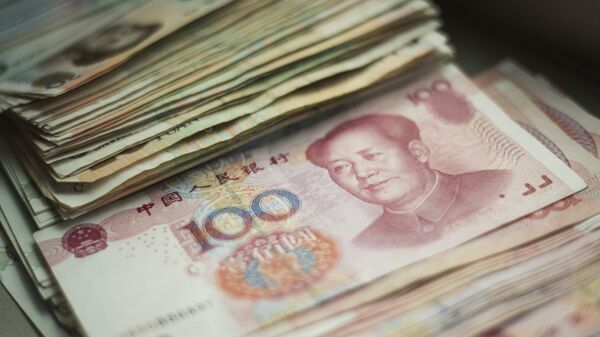Russia and China earlier agreed to expand the use of their national currencies in bilateral trade.
The Russian Central Bank and the People's Bank of China signed a currency swap deal agreement back in 2014. At that time, the swap transaction amount was 815 billion roubles and 150 billion yuan for a period of three years. Statistics show the test was successful. According to the Moscow Stock Exchange, in the first 10 months of 2018, the trade volume of the yuan-rouble swaps reached 940.3 billion roubles. A People's Bank of China report says that in the third quarter of 2018, the yuan trade volume had increased by 105.3%, reaching 4.9 billion yuan, which was almost two times more compared to the same period last year.
Under such circumstances, it's not surprising that the two countries strive to expand the use of their local currencies in international settlements, which had been agreed upon during Russian Prime Minister Dmitry Medvedev's visit to China. The two sides have acknowledged that both Russia and China are under pressure from unilateral actions by Washington.
READ MORE: Cyber Experts Weigh France's Chances to Escape US, China High-Tech Dominance
Liu Ying, a researcher at the Chongyang Financial Research Institute of Renmin University of China, has told Sputnik that using local currencies in international settlements would help challenge the hegemony of the US dollar and protect the two countries from possible US pressure.
'At present, the two parties are facing pressure that comes mainly from the United States. In order to recover from the 2008 financial crisis, the US has been pursuing a quantitative easing policy. As soon as the situation normalised, the Fed started raising interest rates, cutting the balance and tightening the US dollar, which resulted in global losses of liquidity and drops in asset prices. The US has provoked trade wars; they have been pursuing protectionism and unilateralism. In this context, it's quite necessary for China and Russia, especially for Russia, to strengthen currency swaps. Bilateral trade cooperation between China and Russia and the amount of Sino-Russian currency swaps are increasing, which is really important in order to prevent liquidity risks and interest rate hikes caused by the Fed'.
From time to time Russia as well receives such threats from the US. And now that Chinese banks are worried about western sanctions, they are constantly freezing deals with Russian contractors. According to Vladimir Danilov, Head of Russia's Central Bank in China, ‘despite a wide correspondent network and an increase in local currency settlements some Chinese commercial banks have over-interpreted US sanctions against Russia'.
The US sanctions against individuals listed on the SDN don't apply to legal entities where the above-mentioned persons serve, if they don't represent these institutions in specific financial transactions. Nevertheless, Chinese banks often freeze transactions. In order to avoid this, the two countries need to bypass the SWIFT system and start using their own systems.
READ MORE: US Accelerates Global De-Dollarisation by Cutting Iran From SWIFT — Economist
According to Igor Shuvalov, Head of the Russian state development bank Vnesheconombank, Moscow and Beijing are now drafting settlement agreements. He told Sputnik that the two parties may use their own SWIFT-like systems.
'We know the way such systems should work; we now have to have it written into the agreement', he said, adding that the agreement may be signed before the end of this year.
The views and opinions expressed by the speakers do not necessarily reflect those of Sputnik.






